Welcome to Bukhansan National Park: A Sanctuary of Nature and Heritage
Bukhansan National Park, nestled on the northern edge of Seoul, is a breathtaking escape from the city’s urban hustle. Often referred to as the “lungs of Seoul,” this park spans over 80 square kilometers and seamlessly blends rugged natural beauty, historical landmarks, and cultural heritage. With granite peaks piercing the sky, lush forests teeming with life, and ancient temples offering spiritual solace, Bukhansan provides an unmatched experience for every visitor.
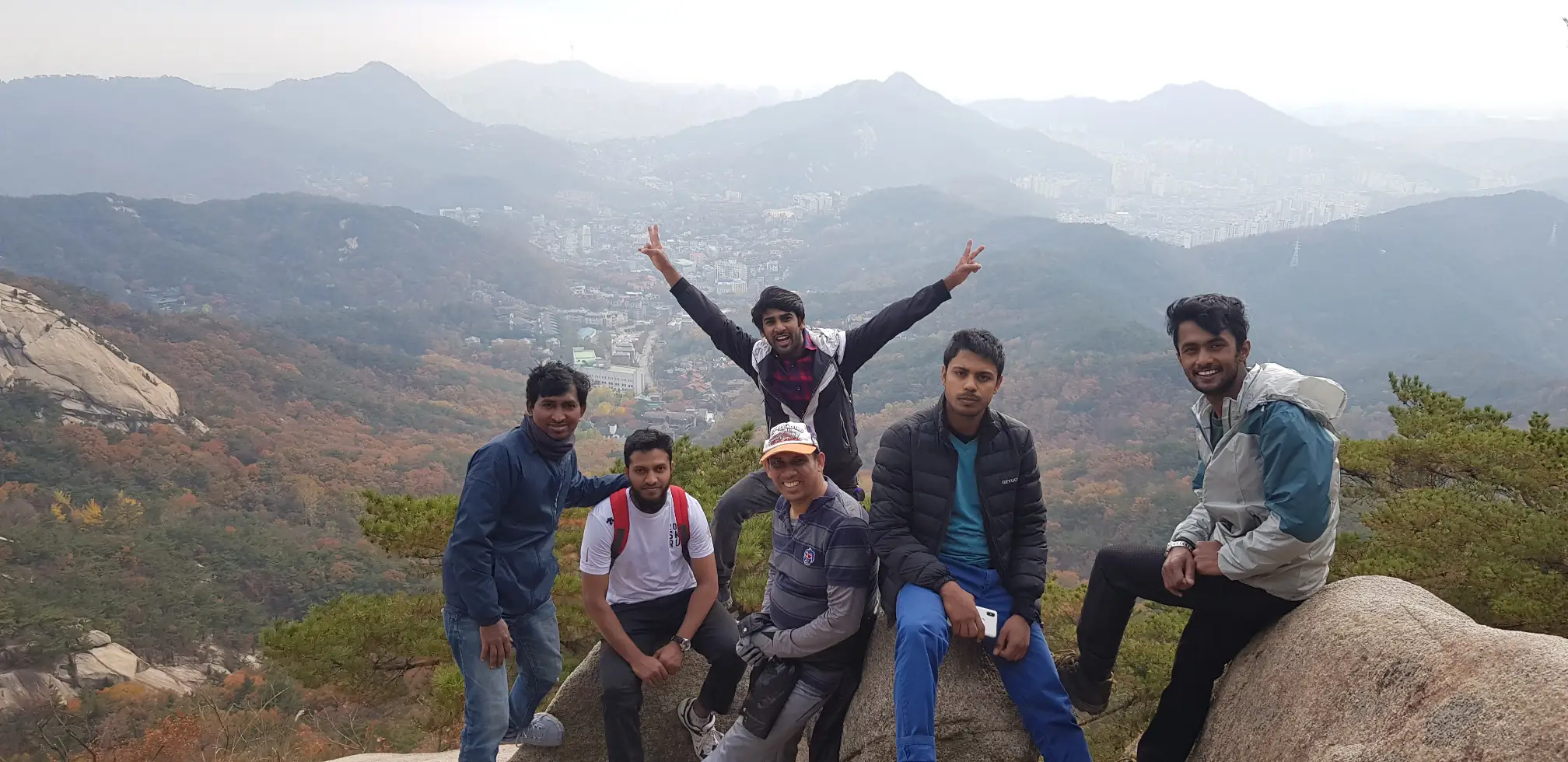
Recognized by the Guinness World Records as the most-visited national park per unit area, Bukhansan is a hiker’s paradise. Whether you’re seeking challenging trails, tranquil paths, or a dive into Korea’s history, the park offers something extraordinary. Let’s uncover the secrets and highlights of this cherished destination.
Iconic Peaks of Bukhansan National Park
1. Baegundae Peak (836.5m): The Crown of the Park
Baegundae Peak, the highest point in Bukhansan, is a must-visit for anyone visiting the park. This iconic summit offers panoramic views that stretch far beyond the city of Seoul.
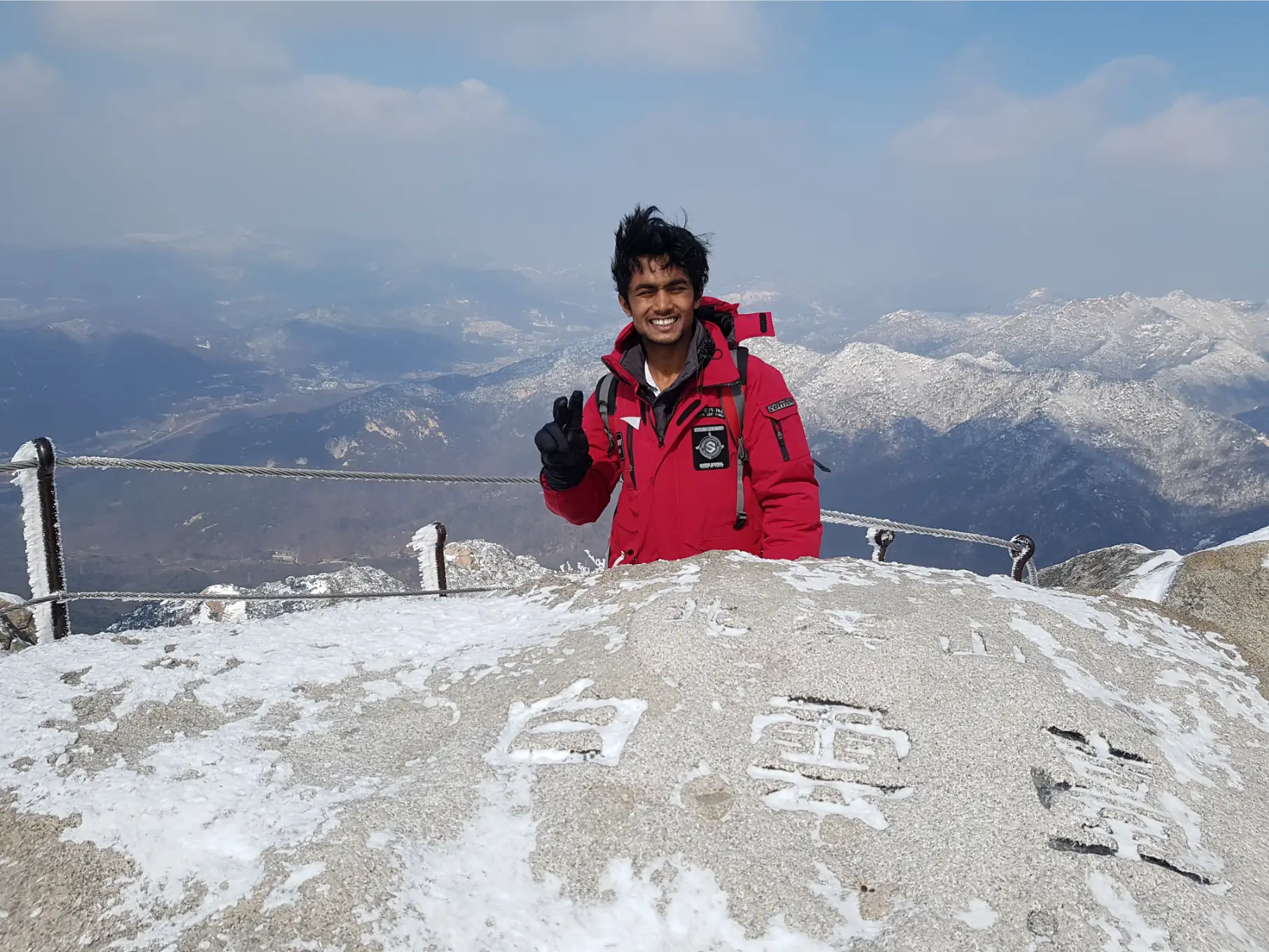
- Highlights:
- From the summit, you can see Seoul’s skyline, the Han River, and the surrounding mountain ranges.
- Ideal for sunrise or sunset hikes, offering breathtaking hues across the horizon.
- Best Routes:
- Bukhansanseong Course: A historic trail that takes you past the ancient fortress walls.
- Baekundae Course: A quieter alternative with equally stunning views.
- Difficulty: Moderate to challenging. The final section involves rope-assisted granite slopes, requiring careful footing and a steady pace.
2. Insubong Peak (810m): The Climber’s Haven
Insubong Peak is a paradise for rock climbers and nature lovers alike. Its steep granite cliffs make it a challenge for climbers, while hikers can enjoy the serene trails leading to its base.
- Highlights:
- Over 70 climbing routes with varying levels of difficulty attract climbers from all over the world.
- The surrounding trails offer peaceful vistas and opportunities to observe climbers scaling the cliffs.
- Best Route:
- Insubong Trail via Doseonsa Temple: A scenic path that begins at a tranquil Buddhist temple and winds through shaded forests.
- Difficulty: Moderate for hikers; challenging for climbers due to its steep terrain and technical routes.
3. Mangyeongdae Peak (787m): A Historical Retreat
Mangyeongdae Peak combines natural beauty with historical significance. Legend has it that King Munmu of the Silla Dynasty visited this peak for quiet reflection.
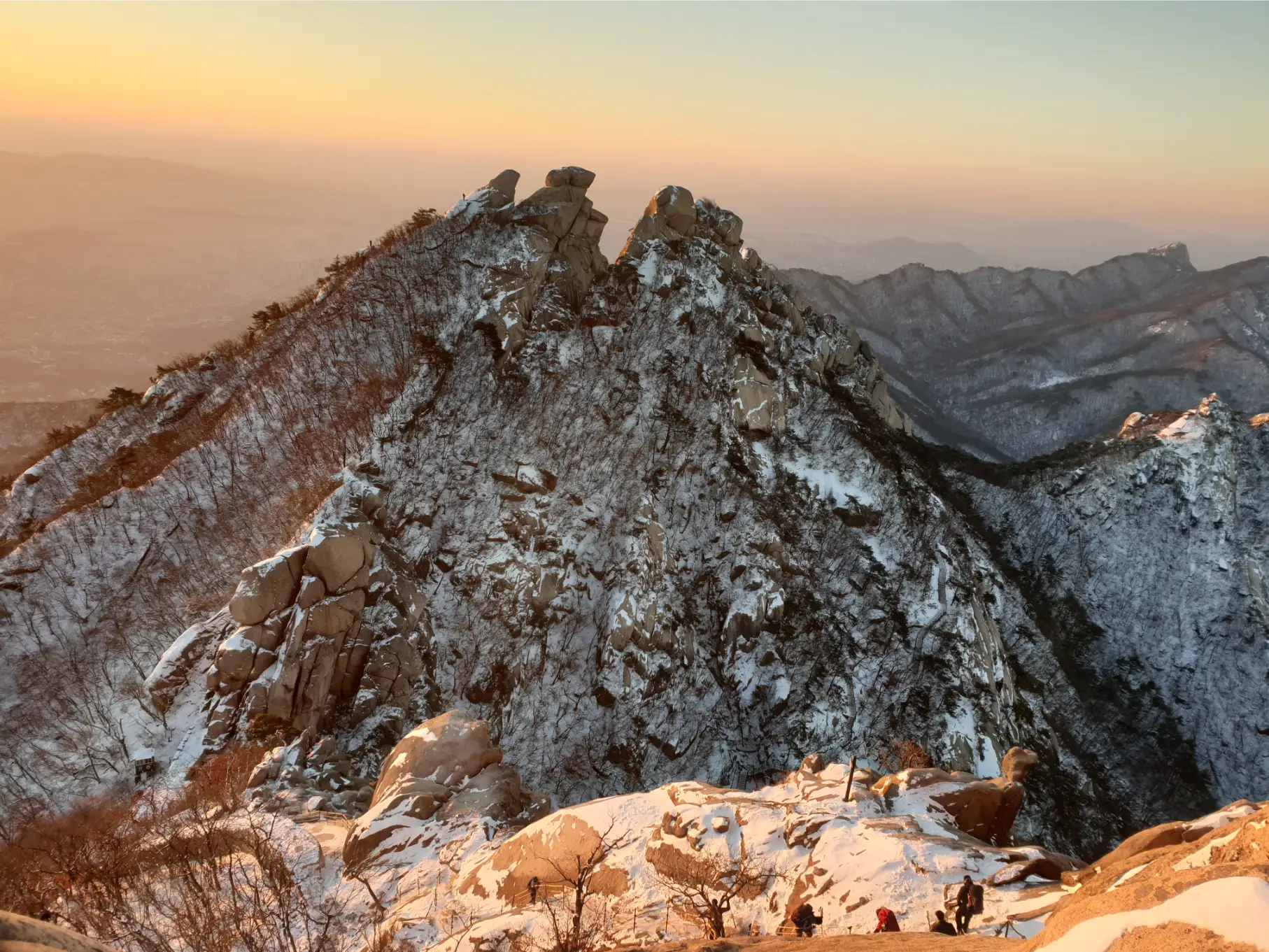
- Highlights:
- A peaceful atmosphere surrounded by lush greenery.
- Stunning views of the valley below, ideal for relaxation or picnics.
- Best Route:
- Daedongmun Course: This trail leads hikers past fortress gates and through forested terrain to the summit.
- Difficulty: Easy to moderate, making it suitable for families and beginners.
4. Dobongsan Peaks: Jaunbong (740m) and Seoninbong (708m)
Located in the northeastern section of the park, Dobongsan Peaks offer a more secluded and adventurous hiking experience.
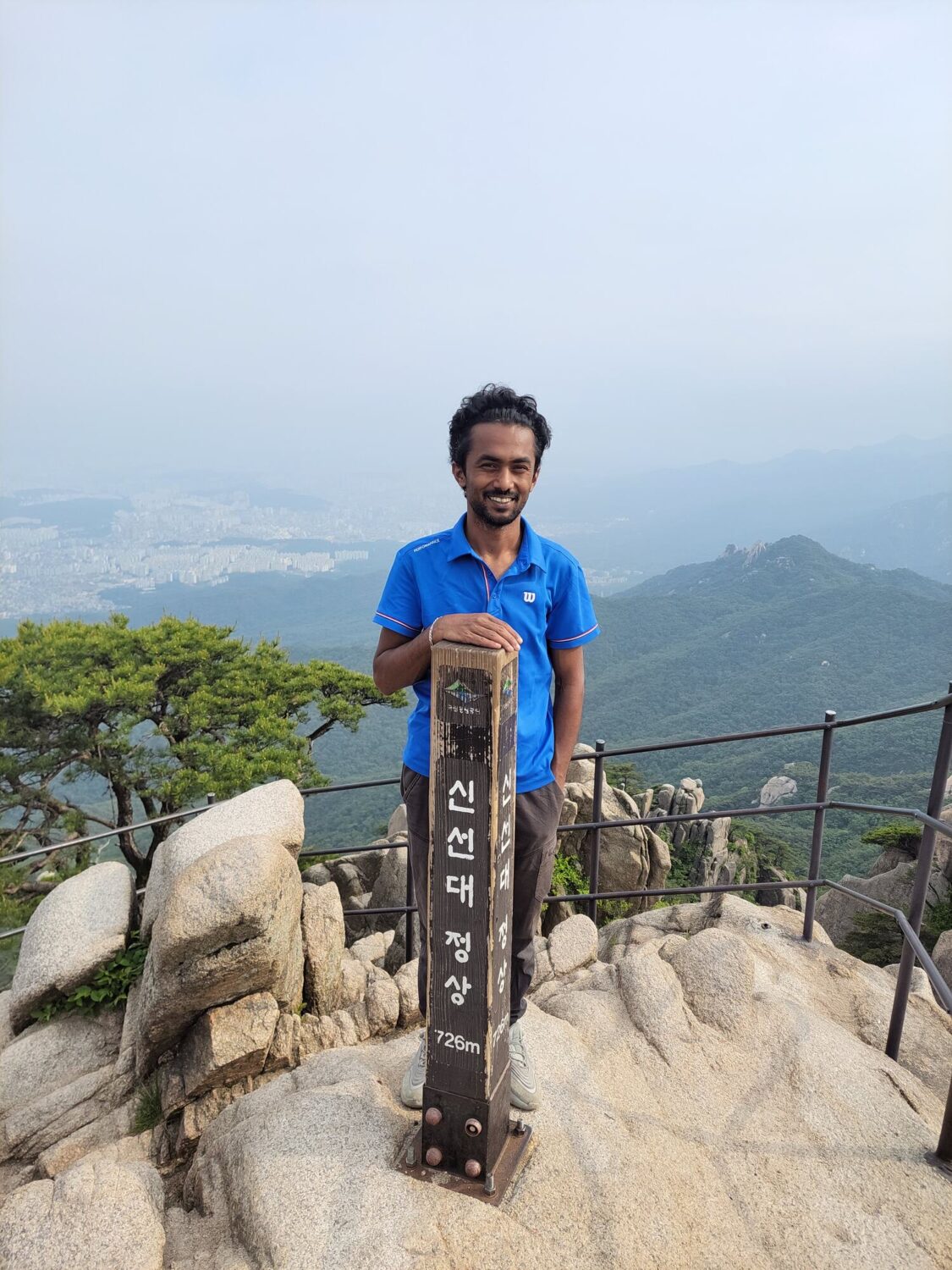
- Highlights:
- Rugged rock formations and tranquil trails provide a sense of solitude.
- Less crowded compared to Baegundae, making it perfect for experienced hikers seeking peace.
- Best Route:
- Dobongsan Trail: A loop trail that connects both peaks, showcasing diverse terrains and wildlife.
- Difficulty: Moderate to challenging.
5. Munsubong Peak (727m): A Tranquil Escape
Munsubong Peak is a serene destination that offers hikers a perfect blend of natural beauty and peaceful solitude. Its slightly lower elevation compared to other peaks in Bukhansan makes it an excellent choice for those seeking a less strenuous hike while still enjoying breathtaking views.
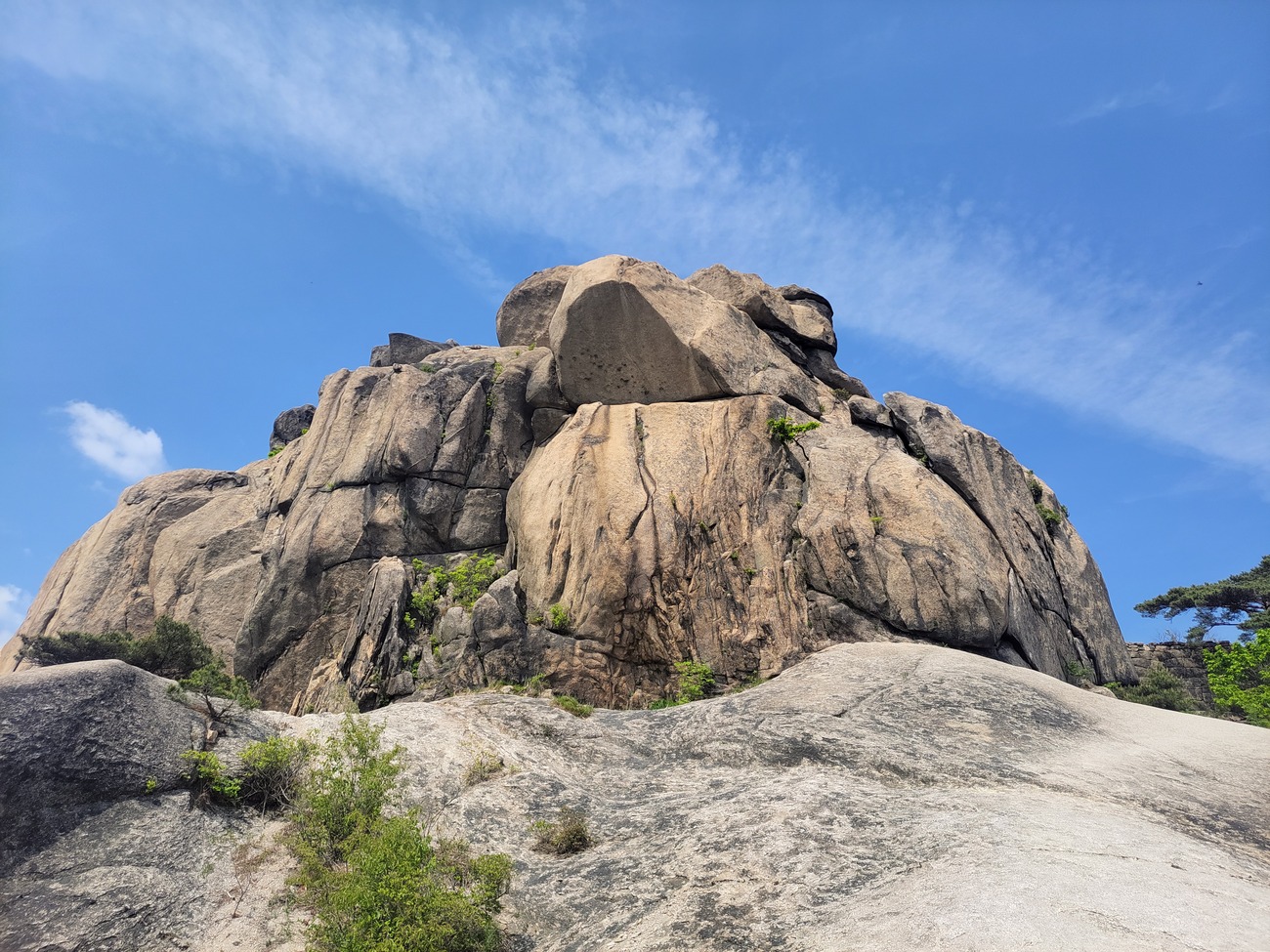
- Highlights:
- A tranquil summit surrounded by dense forests, providing a refreshing retreat from the bustle of city life.
- Panoramic views of nearby peaks and valleys, especially stunning during sunrise or sunset.
- Ideal for those looking to connect with nature in a quiet and reflective environment.
- Best Route:
- Bogukmun Course: Starting near Bogukmun Gate, this route offers a gentle incline through shaded paths and forested terrain, making it a pleasant journey to the peak.
- Difficulty:
- Easy to moderate, suitable for beginners and families looking for a relaxed hiking experience.
Most Popular Trails in Bukhansan National Park
1. Bukhansanseong Course
- Starting Point: Bukhansanseong Park Information Center
- Distance: 3.4 km (one way)
- Time Needed: 2.5 to 3 hours
- Description:
This historic trail is the most popular route to Baegundae Peak. Starting at the information center, it leads hikers through forested areas and past key landmarks like Borisa Temple. The highlight of this course is walking along the ancient walls of the Bukhansanseong Fortress, a structure built during the Joseon Dynasty for Seoul defense. The final section of the trail involves a steep, rocky ascent with rope-assisted sections, making it thrilling and rewarding.
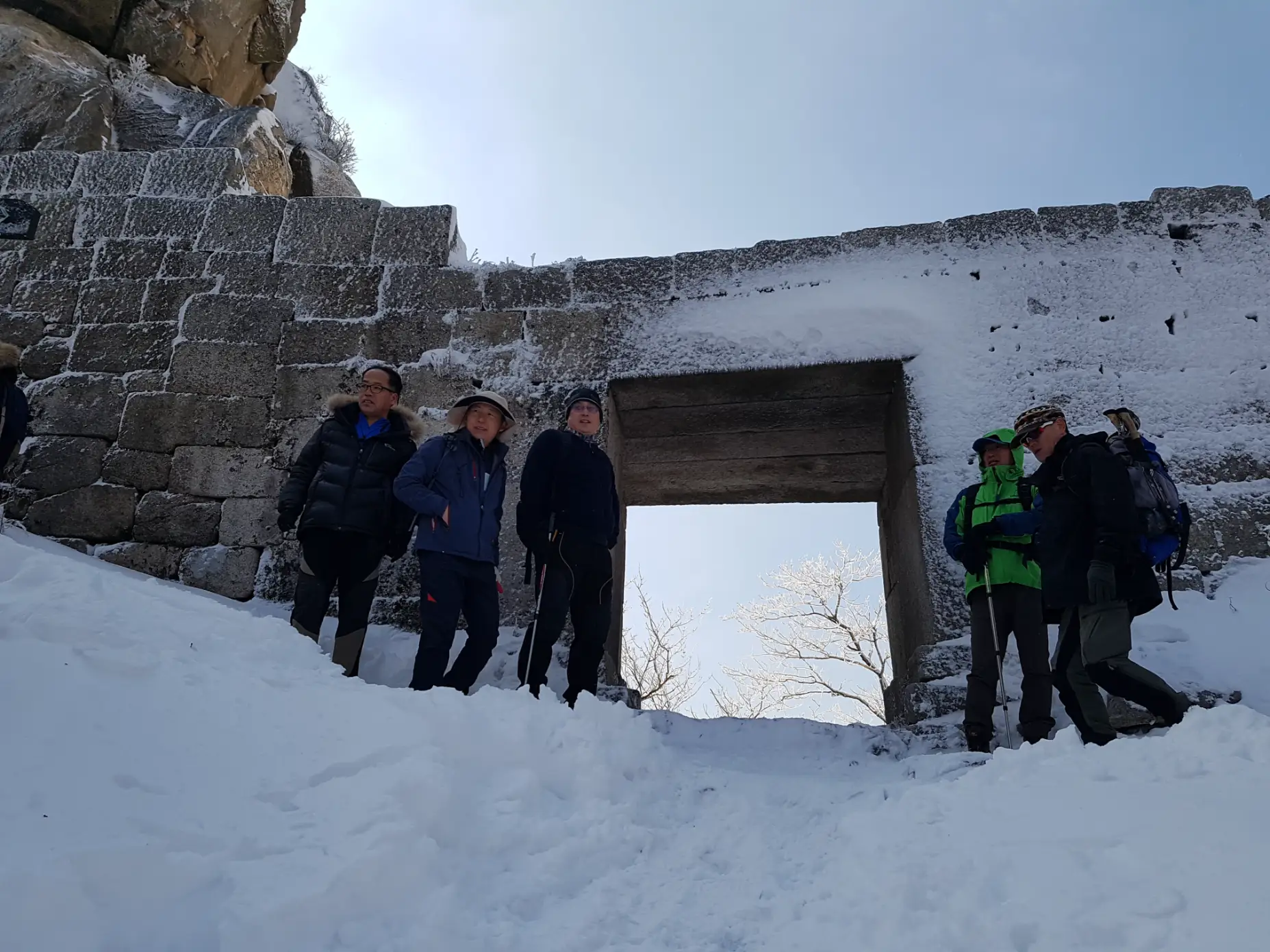
- Highlights:
- Explore Borisa Temple, a peaceful stop to rest and reflect.
- Stunning views from the fortress walls and the summit of Baegundae Peak.
- Perfect for history buffs and adventure seekers.
- Tips:
- Start early to avoid crowds, especially on weekends.
- Carry gloves for a better grip on the ropes during the ascent.
2. Daenammun Course
- Starting Point: Daenammun Entrance
- Distance: 2.8 km (one way)
- Time Needed: 2 hours
- Description:
This relatively short trail takes hikers to Daenammun Gate, one of the main gates of the Bukhansanseong Fortress. The trail begins with a gradual incline through a dense forest, making it shady and refreshing even in summer. The rocky terrain near the gate offers a mild challenge but rewards visitors with picturesque views and insights into the area’s history.
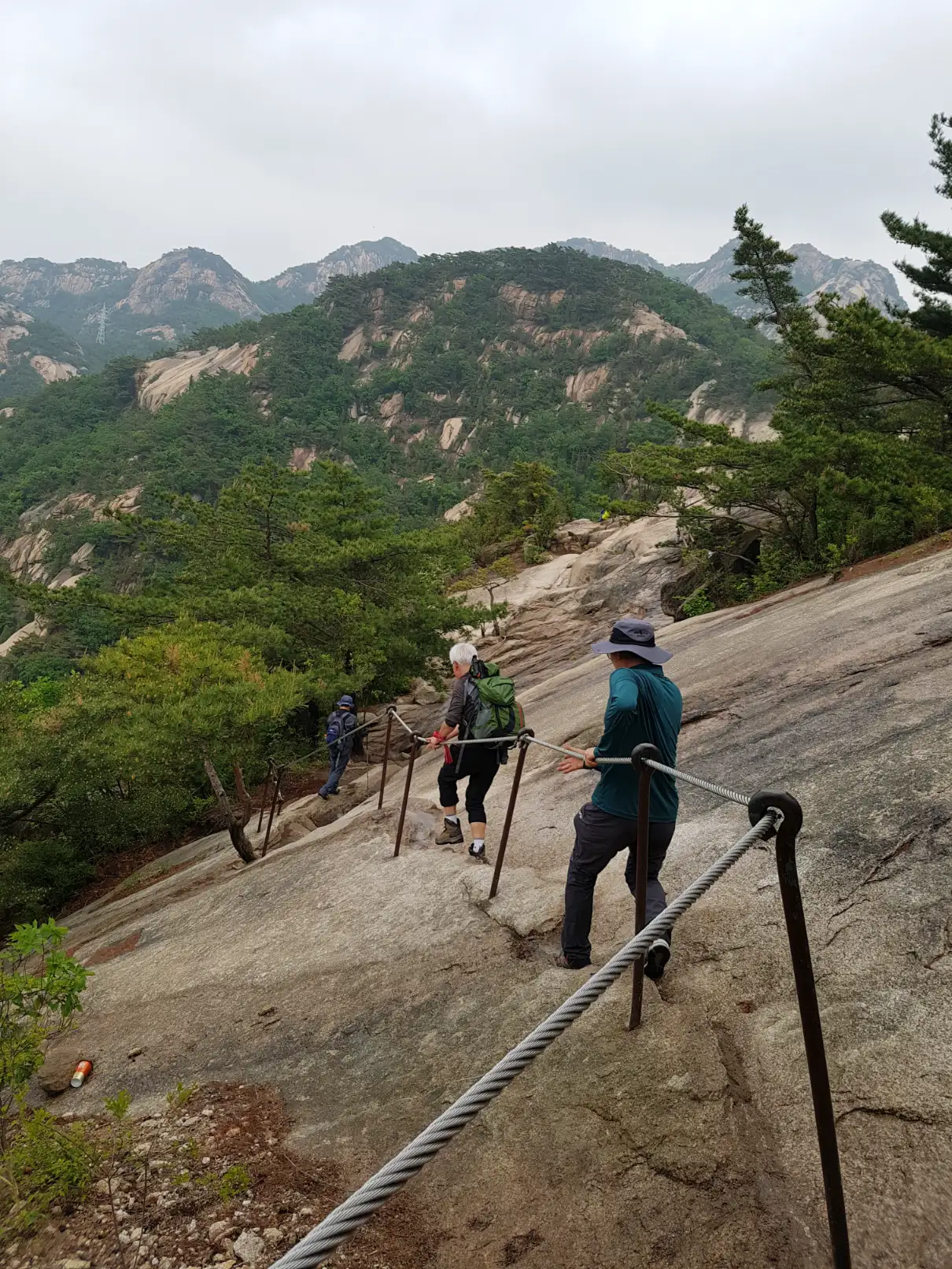
- Highlights:
- The Daenammun Gate: A beautifully preserved stone gate that reflects Korea\u2019s strategic defense efforts.
- Opportunities to see wildlife, including squirrels and magpies, along the forested path.
- Tips:
- Ideal for history enthusiasts who want a shorter hike.
- Combine this trail with another nearby course for a full-day experience.
3. Uiam Course
- Starting Point: Uiam Information Center
- Distance: 4.5 km (one way)
- Time Needed: 2.5 to 3 hours
- Description:
Known for its tranquility, the Uiam Course offers a gentle hiking experience through serene forests. The trail crosses several wooden bridges and features bubbling mountain streams that are particularly refreshing during the summer months. The highlight is the Uiam Observation Deck, which provides panoramic views of the surrounding peaks and valleys.
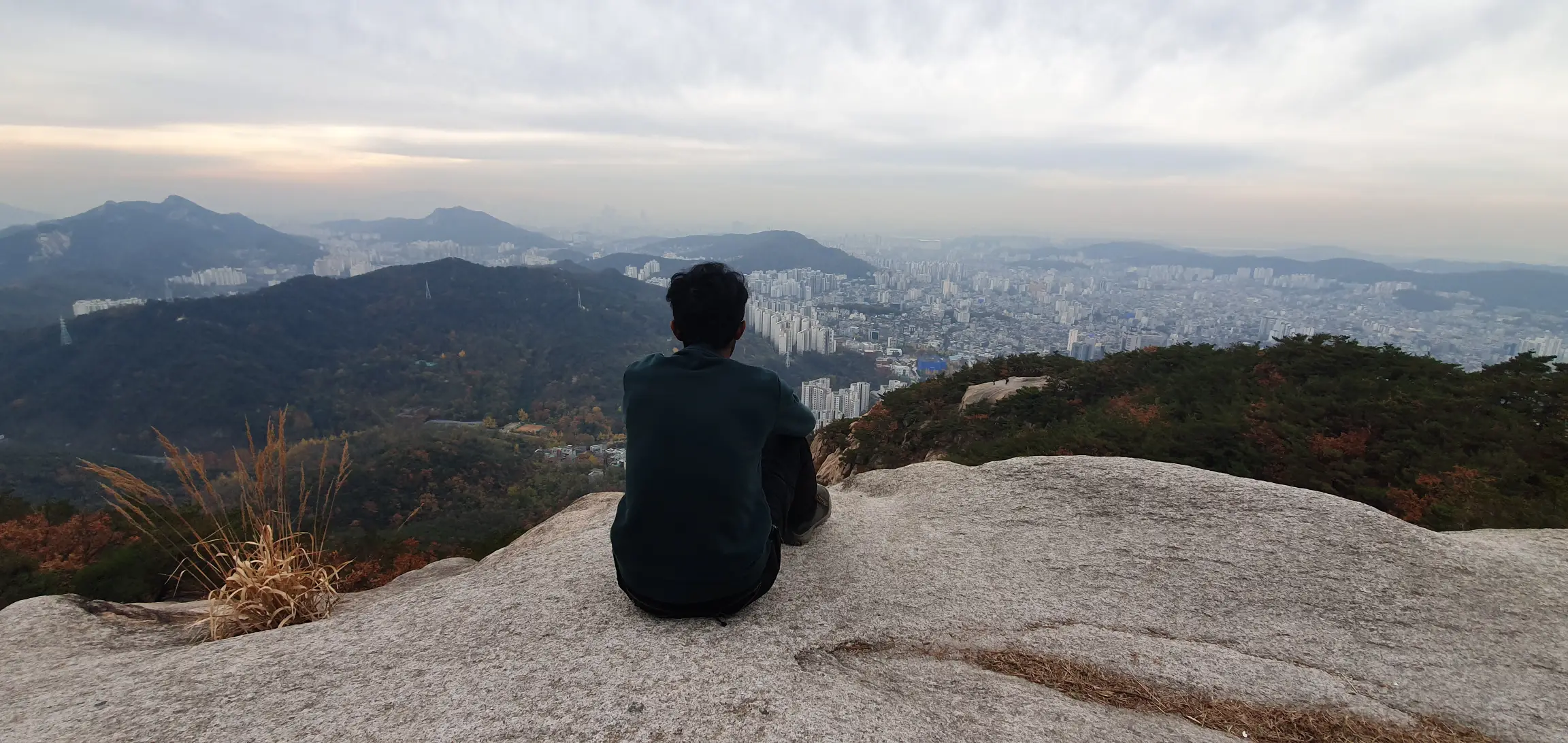
- Highlights:
- A less crowded trail that perfect for families or casual hikers.
- Spring blossoms and autumn foliage enhance the trail beauty.
- Numerous spots to pause and enjoy the sound of flowing water.
- Tips:
- Bring a camera to capture the seasonal colors.
- Pack a small picnic to enjoy at the observation deck.
4. Obong Course
- Starting Point: Gugi Information Center
- Distance: 3.2 km (loop)
- Time Needed: 3 hours
- Description:
The Obong Course is named after its five peaks . The trail combines sections of forested paths and exposed granite ridges, offering a mix of adventure and stunning views. Each peak has its own character, with unique rock formations and viewpoints. While the course is moderately challenging, it an excellent choice for those seeking solitude and variety. - Highlights:
- Dramatic rock formations perfect for photography.
- Diverse landscapes that shift from dense forests to open ridges.
- Tips:
- Wear sturdy hiking boots for scrambling over rocks.
- Visit early in the morning to enjoy the trail in peace.
5. Mangwolsa Temple Trail
- Starting Point: Mangwolsa Temple Entrance
- Distance: 4 km (one way)
- Time Needed: 2.5 to 3 hours
- Description:
This culturally rich trail takes visitors to Mangwolsa Temple, one of Bukhansan hidden gems. The hike begins with a moderate incline through thick forests, transitioning to stone steps near the temple. The main hall of Mangwolsa offers a serene atmosphere for reflection, and the surrounding area provides breathtaking views, especially during autumn. - Highlights:
- Traditional Korean architecture and peaceful courtyards at the temple.
- Stunning views from the temple grounds, ideal for photography.
- Tips:
- Visit early morning for a quieter experience.
- Wear comfortable shoes for the stone steps.
Seasonal Tips for Visiting Bukhansan National Park
Spring (March–May)
Spring in Bukhansan is a visual delight. The trails are lined with blooming cherry blossoms, azaleas, and magnolias, creating a pastel wonderland. Wildlife becomes more active, and the mild temperatures make hiking comfortable.
- Best Trails:
- Uiam Course: Perfect for admiring spring flowers and gentle forest paths.
- Bukhansanseong Course: Offers views of flowering trees along the fortress walls.
- Tips:
- Arrive early to avoid weekend crowds during cherry blossom season.
- Pack a light jacket for cool mornings and evenings.
Summer (June–August)
Summer transforms Bukhansan into a lush green haven. The dense foliage provides shade, while mountain streams offer a refreshing respite from the heat. However, be prepared for occasional monsoon rains.
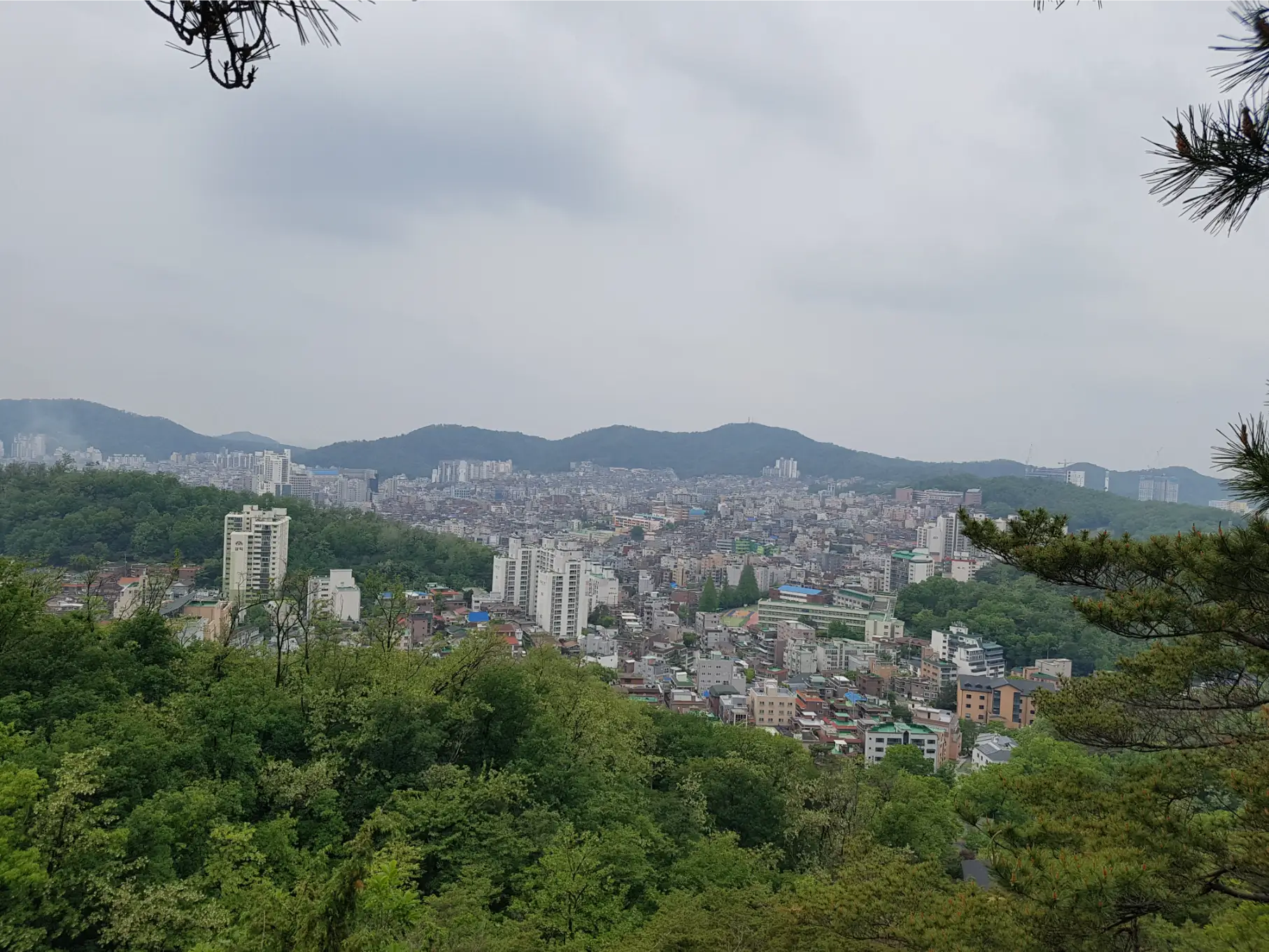
- Best Trails:
- Dulle-gil Sections: Shaded trails make this a great option for summer hiking.
- Hoeryong Course: Features breezy ridges and cooler higher elevations.
- Tips:
- Start your hike early to beat the heat.
- Carry a rain jacket and insect repellent, as mosquitoes can be active.
Autumn (September–November)
Autumn is the most popular season in Bukhansan National Park, with trails adorned in fiery red, orange, and gold foliage. The crisp air and vibrant colors attract both locals and tourists.
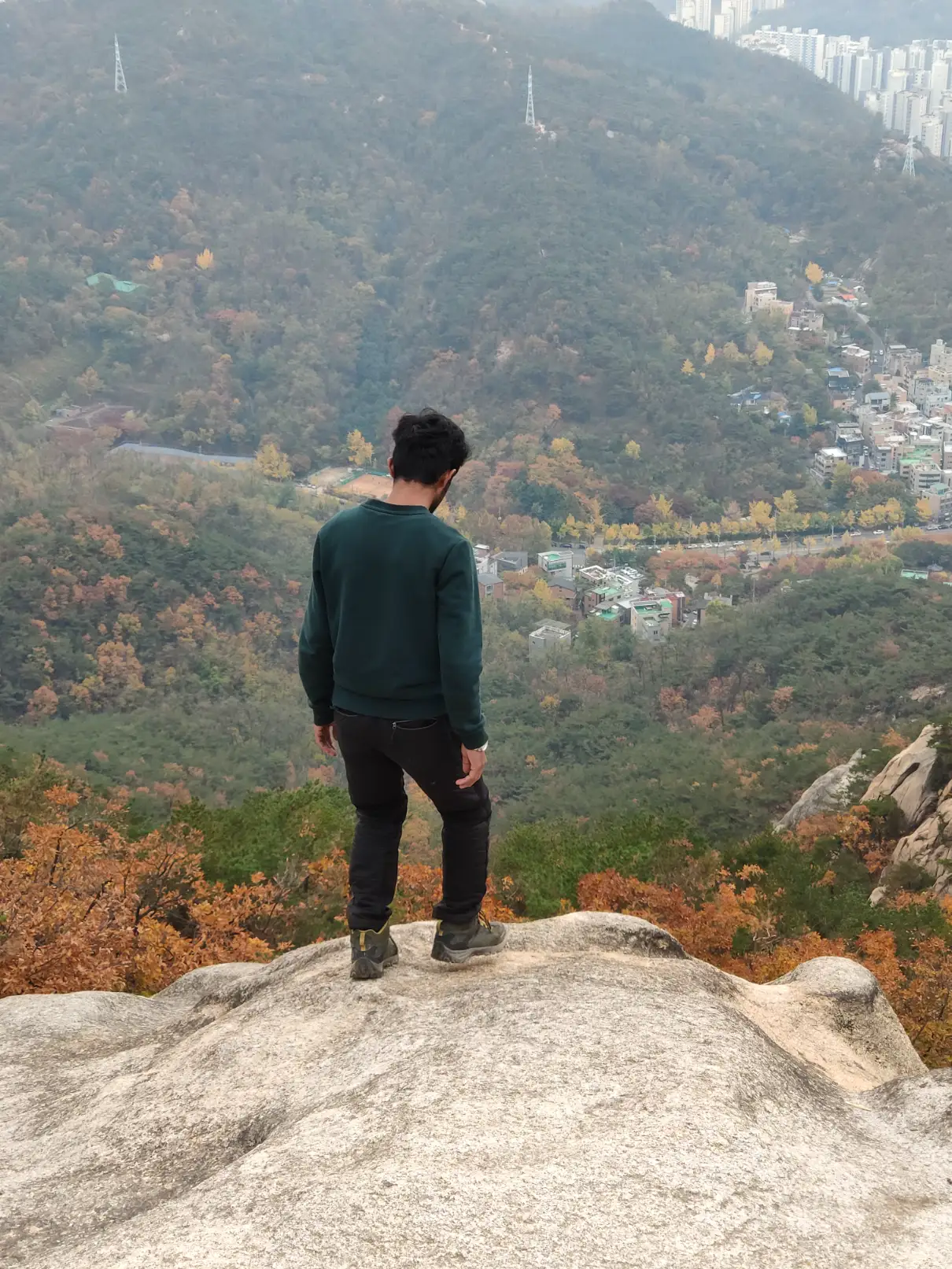
- Best Trails:
- Obong Course: Stunning views of autumn leaves around the five peaks.
- Daedongmun Course: The gate is surrounded by vivid foliage, creating a picturesque scene.
- Tips:
- Plan your visit on weekdays to avoid the large weekend crowds.
- Bring layers, as temperatures drop quickly in the late afternoon.
Winter (December–February)
Winter brings a serene beauty to Bukhansan National Park. Snow-dusted peaks and frost-covered trees create a magical atmosphere, and the trails are much quieter.
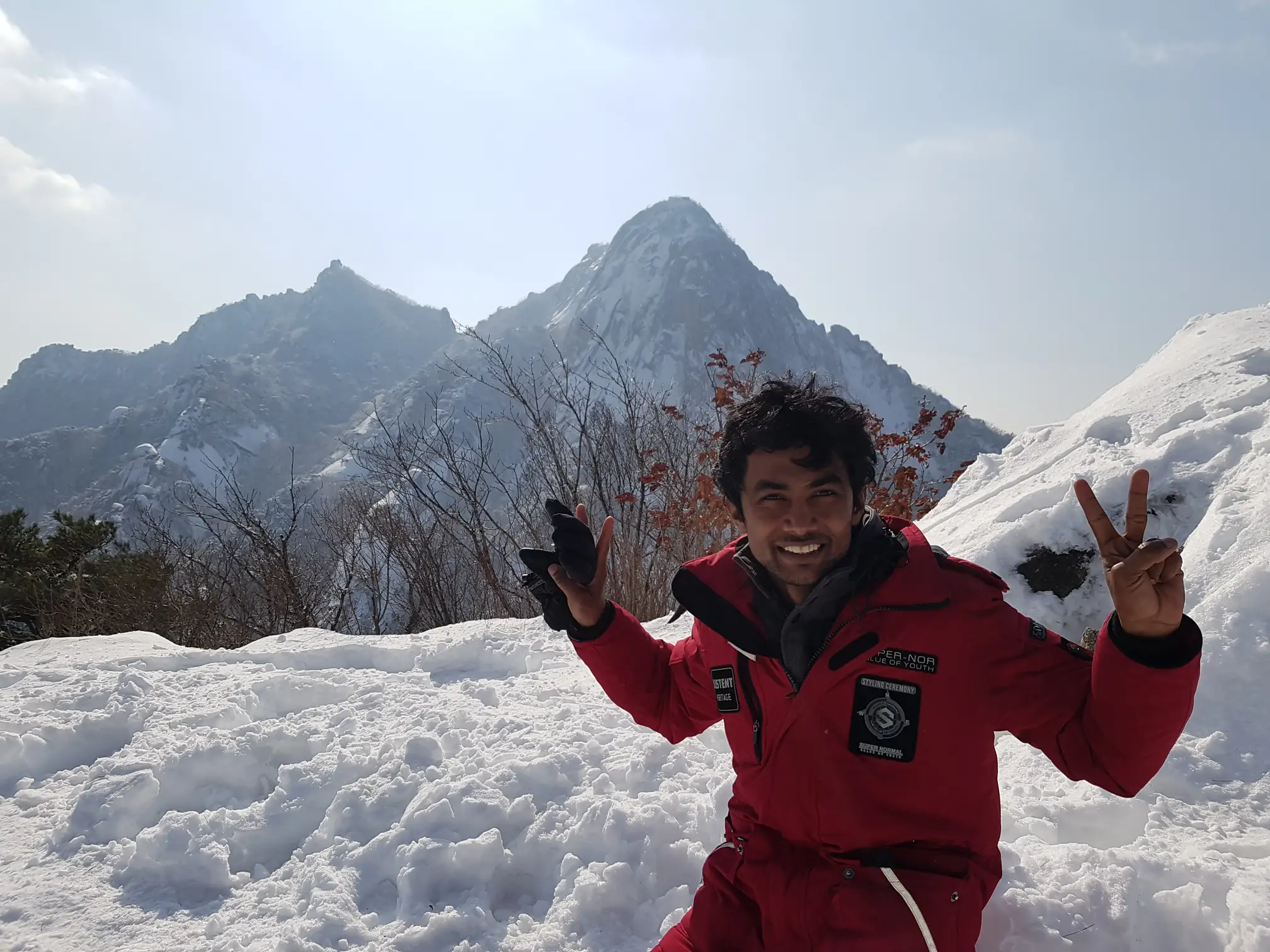
- Best Trails:
- Baegundae Trail: Offers breathtaking views of snow-covered granite at the summit.
- Samobawi Course: The iconic rock formation looks striking against the winter landscape.
- Tips:
- Wear crampons or snow spikes to prevent slipping on icy paths.
- Dress warmly and bring gloves for comfort in sub-zero temperatures.
Facilities in Bukhansan National Park
Bukhansan National Park is equipped with modern facilities to ensure a safe and enjoyable experience for visitors of all ages and skill levels. Whether you’re planning a short hike or an overnight adventure, the park provides resources to make your journey comfortable.
Park Information Centers
The park’s information centers are strategically located at major entry points to guide visitors.
- Locations:
- Bukhansanseong Park Information Center: Gateway to popular trails like the Bukhansanseong and Baegundae courses.
- Dobong Information Center: Ideal starting point for exploring the Dobongsan Peaks.
- Services Offered:
- Detailed trail maps and guides in multiple languages (Korean, English, Chinese).
- Real-time updates on weather, trail conditions, and seasonal recommendations.
- Basic amenities like restrooms, drinking water, and seating areas.
- Tips:
- Stop by these centers before starting your hike to gather essential information about your chosen trail.
Rest Areas and Shelters Bukhansan National Park
To cater to the needs of hikers, Bukhansan offers a mix of rest areas and overnight shelters.
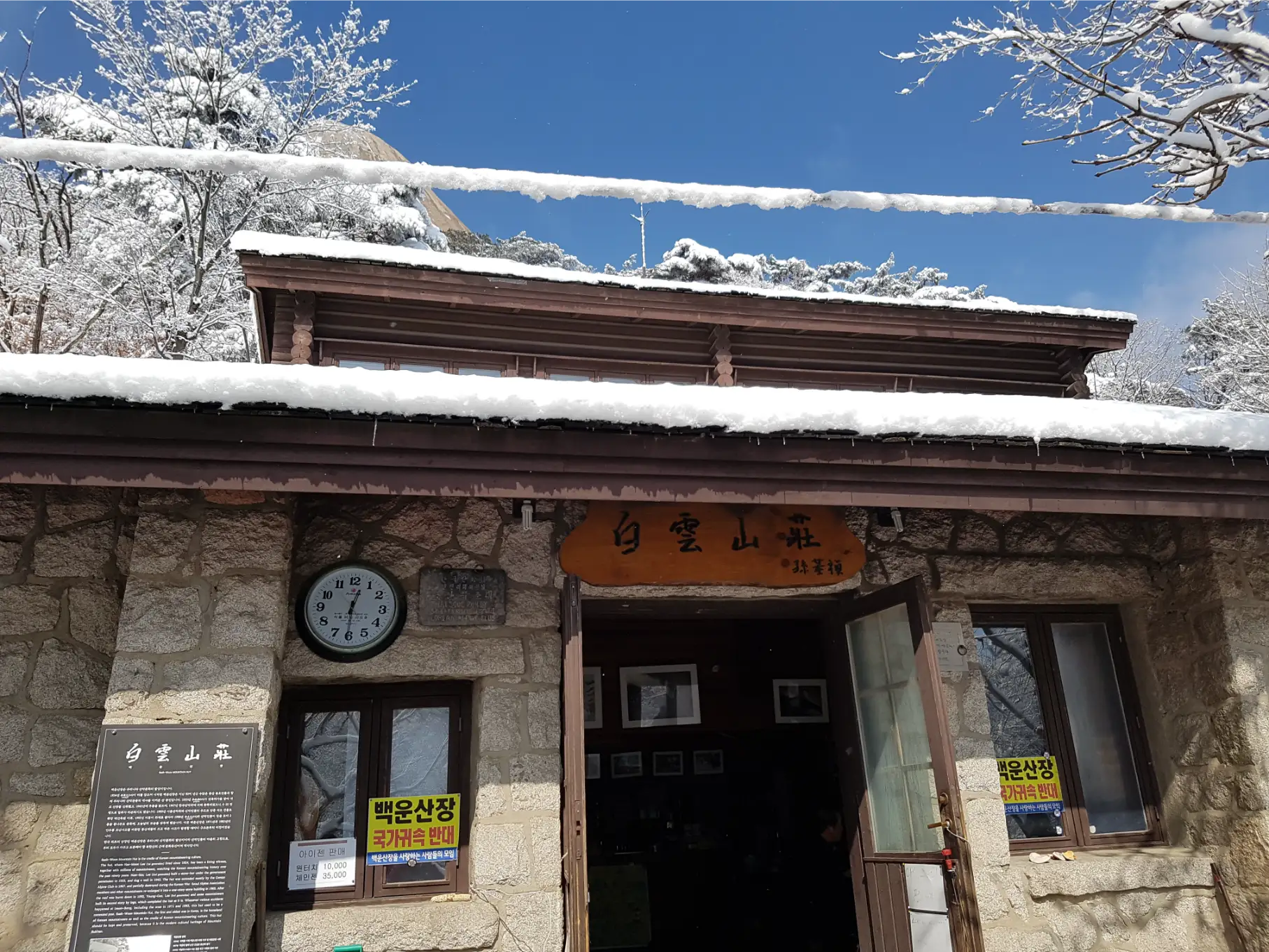
- Rest Areas:
- Spread throughout the park, these areas provide shaded spots to take a break and enjoy the scenery.
- Amenities include wooden benches, picnic tables, and occasional vending machines for drinks and snacks.
- Shelters for Overnight Stays:
If you plan to extend your adventure, Bukhansan’s shelters offer simple but comfortable accommodations.- Notable Shelters:
- Hyangnobong Shelter: Situated near the Dobongsan Trails, offering proximity to the peaks.
- Baekundae Shelter: Conveniently located for early morning hikes to Baegundae Peak.
- Facilities:
- Shared bunk beds or sleeping mats.
- Communal kitchens (bring your own food and utensils).
- Restrooms and access to drinking water.
- Booking and Tips:
- Reservations are required and can be made via the Korea National Park Service website or app.
- Shelters fill up quickly during peak seasons, so book well in advance.
- Bring a lightweight sleeping bag and respect quiet hours for a pleasant stay.
- Notable Shelters:
Things to Do in Bukhansan National Park
Bukhansan National Park offers a diverse range of activities beyond just hiking, making it an ideal destination for outdoor enthusiasts, cultural explorers, and adventure seekers alike. Whether you’re looking to conquer its rugged peaks, immerse yourself in history, or enjoy a leisurely walk through nature, Bukhansan has something for everyone. From scenic trails to historic temples and exhilarating rock climbing spots, here are some of the best things to do in Bukhansan National Park, ensuring a memorable experience in one of Korea’s most beloved natural retreats.
Explore the Bukhansan National Park Dulle-gil Trail
For those who prefer a leisurely walk rather than a challenging hike, the Bukhansan Dulle-gil (북한산 둘레길) is the perfect option. This scenic trail encircles the base of the park and stretches over 70 kilometers, offering breathtaking views of lush forests, charming valleys, and traditional Korean villages. The trail is divided into several sections, each showcasing a different side of Bukhansan National Park, from tranquil streams to vibrant seasonal foliage. It’s a great way to experience the park without tackling the steep inclines, making it suitable for families and casual walkers. If you’re looking for a guided experience, consider booking a walking tour through Klook, which offers curated itineraries to help you explore the hidden gems along the Dulle-gil trail.
Hike to the Summit of Baegundae Peak
No visit to Bukhansan National Park is complete without hiking to Baegundae Peak (백운대), the highest peak in the park, standing at 836.5 meters (2,744 feet). The trail to Baegundae offers a rewarding challenge, taking you through dense forests, rocky terrains, and scenic viewpoints. The panoramic views of Seoul’s skyline from the summit are truly breathtaking and worth the effort. Several routes lead to the summit, with the most popular being the Bukhansanseong Trail, known for its well-maintained paths and historical sites along the way. For those looking to make their hike easier and well-planned, booking a hiking tour via Klook can provide valuable insights and a hassle-free experience.
Visit Cultural and Historical Temples
Bukhansan is not just about nature; it is also home to several ancient Buddhist temples that offer a glimpse into Korea’s rich cultural heritage. Temples such as Bukhansanseong Fortress (북한산성), Doseonsa Temple (도선사), and Seunggasa Temple (승가사) are nestled within the park, each featuring stunning architecture, serene surroundings, and a deep sense of spirituality. These temples provide a perfect opportunity for visitors to experience the peaceful side of Bukhansan while learning about Korean Buddhism and traditional culture. Many visitors combine their temple visits with hiking, making for a well-rounded trip. To enhance your cultural experience, consider using Klook to find guided temple tours that include detailed historical insights and cultural activities.
Try Rock Climbing Adventures
For adventure seekers, Bukhansan National Park is a rock climber’s paradise. The park is known for its impressive granite cliffs, which offer a variety of climbing routes suitable for all skill levels. Popular climbing spots include Insubong Peak (인수봉) and Baegundae, where climbers can test their skills on steep rock faces while enjoying spectacular views of the surrounding landscapes. Rock climbing in Bukhansan requires proper gear and experience, so it’s recommended to join a guided climbing session through providers like Klook, which offer expert guidance and ensure a safe climbing experience.
Enjoy Scenic Photography and Picnicking
If you’re not into hiking or climbing, simply enjoying a leisurely day in Bukhansan with a camera in hand can be incredibly rewarding. The park’s stunning landscapes, from its rocky peaks to tranquil streams and colorful foliage, provide excellent photo opportunities. Spring and autumn, in particular, are the best seasons to capture the park’s beauty in full bloom or fiery hues. Many visitors also enjoy packing a picnic and relaxing at designated rest areas, taking in the fresh mountain air and scenic surroundings. A well-prepared picnic with local snacks and drinks can be easily arranged with items purchased online from platforms like AliExpress, which offers a variety of outdoor essentials at affordable prices.
Experience the Flora and Fauna of Bukhansan National Park
Bukhansan National Park is home to diverse plant and animal species, making it an excellent spot for nature lovers. The park boasts over 1,300 plant species and various wildlife, including deer, wild boars, and numerous bird species. Exploring the park’s quieter trails gives you a chance to spot wildlife in their natural habitat, adding another layer of excitement to your visit. Bringing along a good pair of binoculars or a wildlife guidebook from AliExpress can enhance your nature-watching experience.
Whether you’re planning a challenging hike to Baegundae Peak, a relaxing stroll along the Dulle-gil trail, or an adventurous rock climbing session, Bukhansan National Park offers a wide range of activities to suit every traveler. Plan your visit today and make the most of your journey with the right gear, comfortable accommodation through Agoda, and unforgettable guided experiences available on Klook.
How to Go to Bukhansan National Park?
Bukhansan National Park is easily accessible from various parts of Seoul, with multiple entrances and starting points. Here are several options to reach the park, catering to different trails and sections:
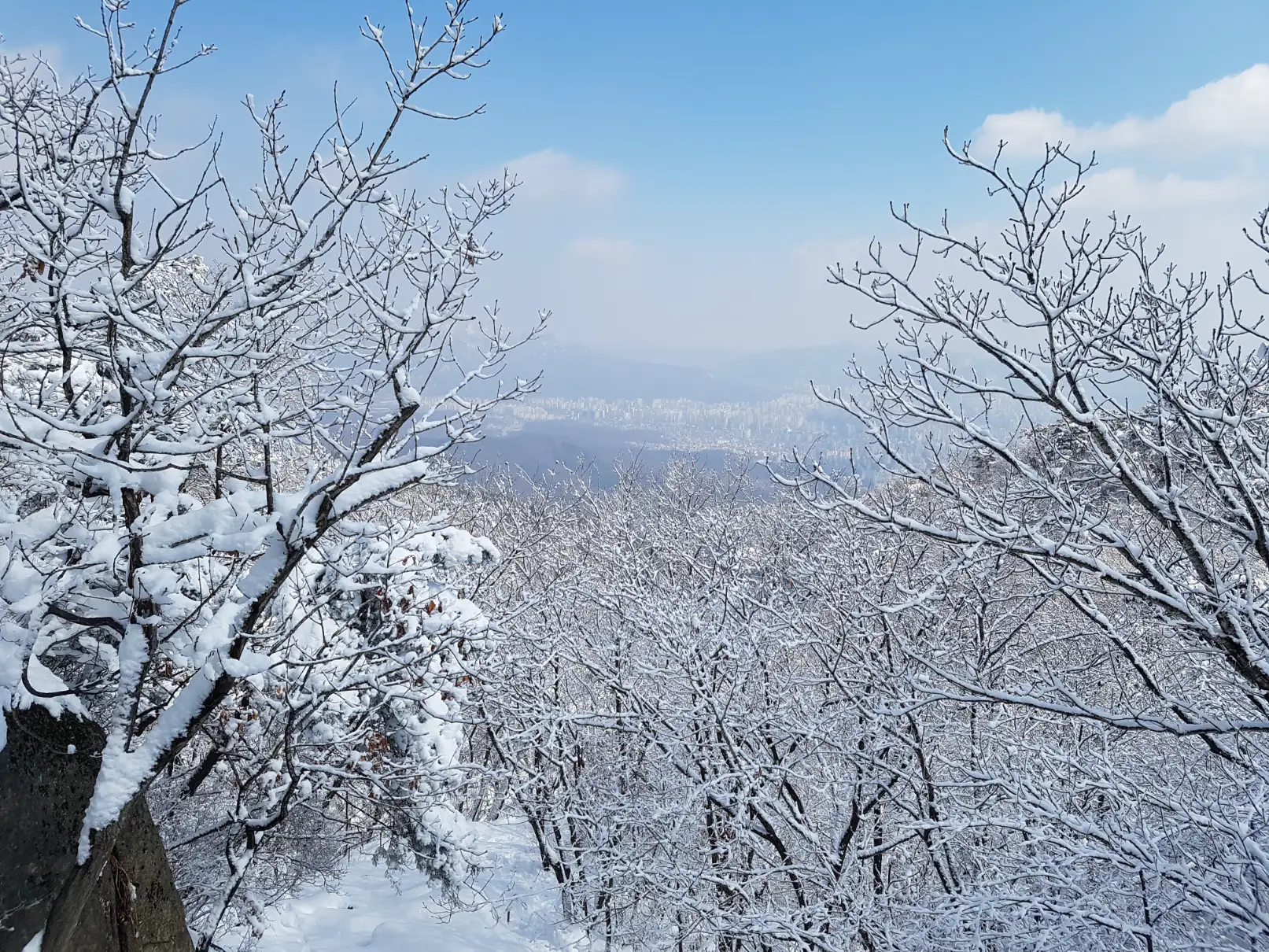
Bukhansanseong Fortress Entrance:
Take Seoul Metro Line 3 to Gupabal Station, then transfer to Bus 704. Get off at the Bukhansanseong Fortress stop, which serves as the gateway to trails leading to Baegundae Peak.
Dobongsan Entrance:
Take Metro Line 1 or 7 to Dobongsan Station. From there, it’s just a 10-minute walk to the trailhead, which provides access to the Dobongsan Peaks, including Jaunbong and Seoninbong.
Gugi Entrance (Obong Course):
Take Seoul Metro Line 3 to Gyeongbokgung Station, then transfer to Bus 7212. Get off at the Gugi-dong Community Center stop. This entrance is ideal for those heading to the Obong Course or other nearby trails.
Uiam Entrance:
Take Seoul Metro Line 4 to Suyu Station, then transfer to Bus 120 or 153. Get off at Uiam Information Center, which is the starting point for the tranquil Uiam Course.
Bogukmun Gate (Daedongmun Course):
Take Seoul Metro Line 4 to Mia Station, then transfer to Bus 1014 or 1124. Alight at Bogukmun Gate, an excellent access point for exploring the fortress walls and Daedongmun Course.
Mangwolsa Temple Entrance:
Take Metro Line 1 to Mangwolsa Station and walk approximately 15 minutes to the Mangwolsa trailhead. This entrance is perfect for visiting the historic Mangwolsa Temple and nearby trails.
- Tips for Getting There:
– Check local bus schedules to ensure seamless transfers.
– Many entrances have nearby parking lots, but they can fill up quickly, especially on weekends.
– Plan your route based on the trail you intend to hike and your starting location in Seoul.
Popular FAQs About Bukhansan National Park
Here are answers to some of the most frequently asked questions to help you prepare for your visit:
No, entrance to Bukhansan National Park is free. However, some temples, like Doseonsa Temple, may request small donations for maintenance.
The park is officially open from 4:00 am to 5:00 pm. While there are no gates to prevent entry outside these hours, it’s advisable to hike within the official times for safety reasons
Spring (March–May) and autumn (September–November) are the best seasons, offering mild weather and stunning natural beauty.
Yes, guided tours are available through local hiking groups or the Korea National Park Service. Options range from history-focused tours to trail-specific hikes.
No, camping is not permitted to protect the environment. However, you can book overnight shelters for multi-day hikes.
Yes, pets are allowed but must be kept on a leash at all times. Be mindful of the terrain and other hikers, as some trails may not be pet-friendly.
The park offers various facilities, including restrooms at major crossings, mountain huts with refreshments, and restaurants in central areas. At trailheads, especially within Seoul, there are numerous shops selling hiking gear.
Yes, many trails are family-friendly and suitable for children. The lower parts of the park have comfortable paths with frequent benches and picnic spots, making them ideal for families.
Comfortable hiking shoes with good grip.
A reusable water bottle and snacks.
Seasonal items like a jacket for spring/autumn, rain gear for summer, or crampons for winter.
Why Bukhansan Deserves a Spot on Your Bucket List
Imagine standing atop a towering granite summit, the city of Seoul stretching out like a living tapestry below, while a cool breeze carries the scent of pine forests. Picture yourself walking along ancient fortress walls, once used to protect the kingdom from invaders, and now serving as a scenic pathway into Korea’s storied past. Whether you’re an avid adventurer, a history buff, or someone seeking a refreshing break from city life, Bukhansan National Park offers something extraordinary. Plan your journey today and discover a destination that combines adventure, reflection, and the timeless beauty of nature.
